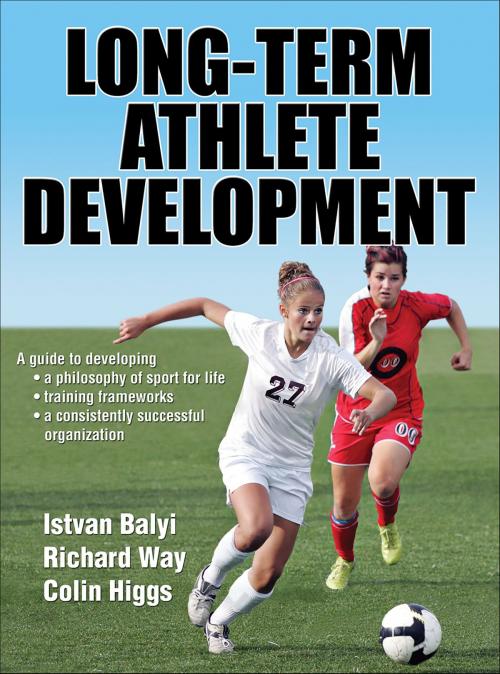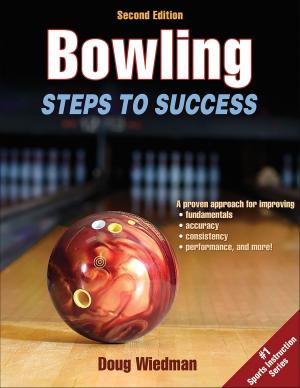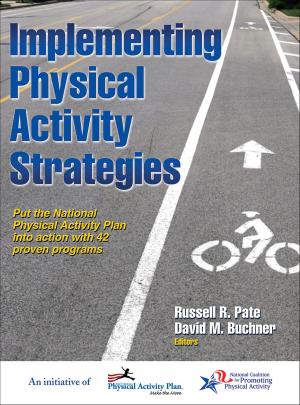Long-Term Athlete Development
Nonfiction, Sports, Reference, Business & Finance, Industries & Professions, Industries| Author: | Istvan Balyi, Richard Way, Colin Higgs | ISBN: | 9781492582151 |
| Publisher: | Human Kinetics, Inc. | Publication: | September 4, 2013 |
| Imprint: | Human Kinetics, Inc. | Language: | English |
| Author: | Istvan Balyi, Richard Way, Colin Higgs |
| ISBN: | 9781492582151 |
| Publisher: | Human Kinetics, Inc. |
| Publication: | September 4, 2013 |
| Imprint: | Human Kinetics, Inc. |
| Language: | English |
Long-Term Athlete Development describes how to systematically develop sporting excellence and increase active participation in local, regional, and national sport organizations. This resource describes the long-term athlete development (LTAD) model, an approach to athlete-centered sport that combines skill instruction with long-term planning and an understanding of human development. By learning about LTAD, sport administrators and coaches will gain the knowledge and tools to enhance participation and improve performance and growth of athletes.
This text offers the first in-depth and practical explanation of the LTAD model. Long-Term Athlete Development integrates current research on talent development and assessment into practice to help sport leaders plan athletic development across the life span or design detailed programs for a particular group, including those with physical and cognitive disabilities. Authors Balyi, Way, and Higgs—pioneers and veteran LTAD facilitators—critique current talent development models, discuss the limitations of the LTAD model, and demonstrate the benefits of LTAD as a new approach. By integrating knowledge of these models, readers are able to analyze their own programs and take steps to improve sport and coaching philosophies and reach adherence and performance goals.
Explanations and visuals of concepts help readers understand the state of knowledge in talent identification and long-term athlete development. Chapter-opening vignettes offer examples of how the LTAD model can be used to alleviate common issues. Listings at the end of each chapter offer sources for further study, and reflection questions guide readers in applying the content. The text offers a logical presentation of current research:
• Key factors that guide and shape the LTAD model, such as physical literacy, the differences between early- and late-specialization sports, and variations in trainability across the life span
• Information on the time needed to develop excellence in sport and how periodization of training is related to the developmental stage of the athlete
• The seven stages of LTAD, from development of fundamental movement skills to training for elite competition and the transition to lifelong physical activity
• Considerations in the development of optimal programs for participants passing through each of the seven stages
Long-Term Athlete Development is an essential guide to improving the quality of sport, developing high-performance athletes, and creating healthy, active citizens. It offers parents, coaches, and sport administrators a deeper understanding of the LTAD model, helping them create an enjoyable, developmentally appropriate environment for both competitive athletes and enthusiastic participants.
Long-Term Athlete Development describes how to systematically develop sporting excellence and increase active participation in local, regional, and national sport organizations. This resource describes the long-term athlete development (LTAD) model, an approach to athlete-centered sport that combines skill instruction with long-term planning and an understanding of human development. By learning about LTAD, sport administrators and coaches will gain the knowledge and tools to enhance participation and improve performance and growth of athletes.
This text offers the first in-depth and practical explanation of the LTAD model. Long-Term Athlete Development integrates current research on talent development and assessment into practice to help sport leaders plan athletic development across the life span or design detailed programs for a particular group, including those with physical and cognitive disabilities. Authors Balyi, Way, and Higgs—pioneers and veteran LTAD facilitators—critique current talent development models, discuss the limitations of the LTAD model, and demonstrate the benefits of LTAD as a new approach. By integrating knowledge of these models, readers are able to analyze their own programs and take steps to improve sport and coaching philosophies and reach adherence and performance goals.
Explanations and visuals of concepts help readers understand the state of knowledge in talent identification and long-term athlete development. Chapter-opening vignettes offer examples of how the LTAD model can be used to alleviate common issues. Listings at the end of each chapter offer sources for further study, and reflection questions guide readers in applying the content. The text offers a logical presentation of current research:
• Key factors that guide and shape the LTAD model, such as physical literacy, the differences between early- and late-specialization sports, and variations in trainability across the life span
• Information on the time needed to develop excellence in sport and how periodization of training is related to the developmental stage of the athlete
• The seven stages of LTAD, from development of fundamental movement skills to training for elite competition and the transition to lifelong physical activity
• Considerations in the development of optimal programs for participants passing through each of the seven stages
Long-Term Athlete Development is an essential guide to improving the quality of sport, developing high-performance athletes, and creating healthy, active citizens. It offers parents, coaches, and sport administrators a deeper understanding of the LTAD model, helping them create an enjoyable, developmentally appropriate environment for both competitive athletes and enthusiastic participants.















